Iran-Iraq war. Ch 3
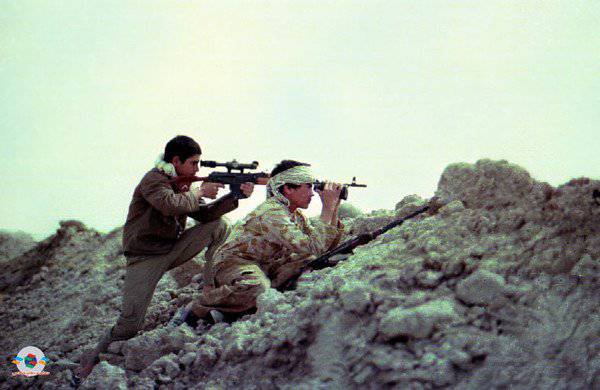
In the summer of 1982, a new phase began in the Iran-Iraq war. The Iranian military-political leadership decides to transfer the war to Iraqi territory. Tehran planned to inflict a decisive defeat on the Iraqi armed forces, overthrow the regime of Saddam Hussein and establish the power of the pro-Iranian Shiite government. Therefore, all attempts by Baghdad to begin negotiations were rejected. Tehran set obviously impracticable conditions like the renunciation of Saddam Hussein of power, the trial of him and his surroundings, and the payment of contributions by Iraq.
Preparing a new attack on Iraqi troops, the Iranian command concentrated 120 thousand people on the southern sector of the front, 600 tanks900 guns and mortars. The tasks of the operation were of a strategic scale: to capture Basra (the country's main seaport), the southern regions of Iraq and cut off Baghdad from the Persian Gulf. On the night of July 13-14, 1982, approximately 100 KSIR fighters and Basij militias launched an offensive from the Ahvaz, Kushk and Khorramshahr districts towards Basra. Using its numerical superiority and resistance of the units to high losses, the Iranian forces initially broke through the Iraqi defensive line in some areas and wedged 15–20 km into the territory of Iraq. But the Iraqi command was able, with the help of counterattacks of armored formations, to stop the enemy offensive about 9 km east of Basra. The advanced parts of the Iranians were cut off from the main forces and destroyed. Iranian troops retreated to their original positions, losing more than 15 thousand people killed. Only a few units were able to gain a foothold in Iraq at a depth of 3-5 km from the border.
After the failure of this offensive, the war turned into a positional confrontation. Both sides strengthened their positions, made air strikes and art strikes. The Iranians went over to the tactics of gradually squeezing the enemy, step by step trying to strengthen their positions. The Iraqis relied on technical power: the USSR armed Iraq before and during the war. With the help of superiority in the number of armored vehicles, airplanes, helicopters, volley fire systems and other heavy weapons, Iraqi troops could hold back the onslaught of a more numerous and fanatical opponent.
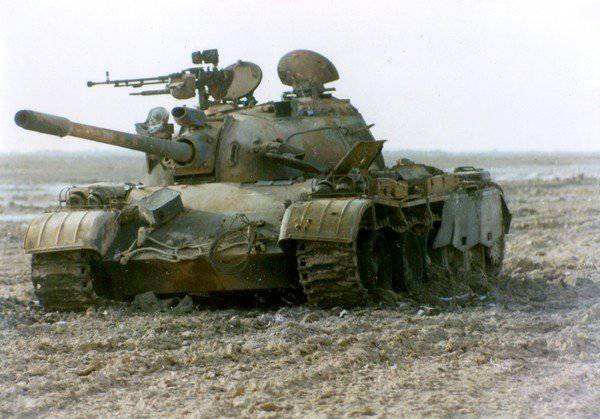
1983 Campaign
During 1983, the Iranian military-political leadership tried, through a series of offensive operations on various sectors of the front, to weaken the defensive line of the Iraqi army, to wear down the enemy and to achieve a radical change in the war. The number of the army was almost doubled - Iran had a gun to 1 million. Approximately half of them were militiamen, “guardians of the revolution”, they bore the brunt of the war — they were making their way through the chest with regular units. Aircraft supply problem weapons and especially difficult, has not been resolved. We had to rely on the numerical superiority and psychological qualities of the fighters. In 1983, the Iranian command sent the main blow northward, trying to cut the enemy’s defenses, reach the Tigris River and break through to the Iraqi capital. These actions were supposed to disrupt the stability of the entire Iraqi defense. In this direction, the 4 offensive was attempted. In addition, they acted in Iraqi Kurdistan, relying on the help of local separatists.
The peculiarity of the attacks of the Iranians was that they began at night. The Iranian command tried to avoid strikes of enemy aircraft and helicopters, and to use the psychological factor associated with night attacks - the enemy did not see the effectiveness of his fire, felt more fear.
The Iraqi command planned to exhaust, defuse the enemy and make peace with a blank defense. No major offensive operations were planned. A powerful defense line was created with a system of minefields, anti-tank and anti-personnel ditches, wire fences, firing positions, etc. The defending forces were helped by armored vehicles and aviation.
Active warfare in 1983 began in February with the Iranian offensive operation Zarya. Iranian troops began to attack 6 February in the southern border area of the front in the province of Maysan and had the task to seize the Basra-Baghdad road. Approximately 200 of thousands of people in the 6 corps on the front line in 40 km were thrown into battle. The Iranian troops, for the most part these were poorly armed and quickly trained militiamen, had to attack across the open area on the powerful defenses of the enemy, who had complete superiority in the air, in armored vehicles and heavy artillery. As a result, the Iranians managed to capture a number of positions, but on the whole their attack was repelled. The Iraqi command counterattacked, combining strikes of armored vehicles with infantry, air strikes and artillery shelling. The Iranians lost several thousand people killed. In this battle, the Iraqis widely and successfully used the Air Force - attacked the Iranians with the help of attack helicopters, multi-role fighters.
At the same time, the Iranians attacked on the northern front in the area of Mandali. This offensive was stopped in April.
Iranian troops suffered heavy losses and expended a supply of ammunition, which forced them to temporarily go on the defensive. In July-August, 1983, during Operation Zarya-2, Iranian forces launched a simultaneous offensive in two sectors, central and northern, and a little later attacked in the south. The Iraqis fought off these attacks. Only in the north did the Iranians seize the city of Penjvin. Both sides suffered heavy losses by the beginning of 1984: 300 thousand people from Iran and 250 thousand from Iraq.
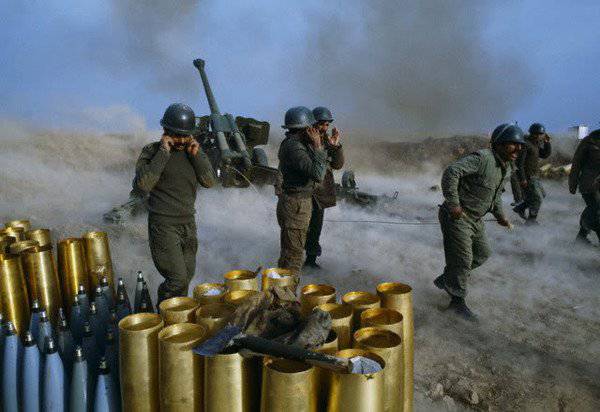
1984 Campaign
From the late autumn of 1983, the Iranian command was preparing a new decisive operation. She received the conditional name "Khaybar-5" and began in late February 1984. The blow, as in February 1983, was struck on the southern front. The half-million Iranian army, using the lack of a solid front line in the marshland east of Qurnah, was able to penetrate Iraqi territory on 10 – 15 km. The Iranians seized the Majnun Islands. The Iranian command again started the operation at night, the surprise factor was used - the troops were seated on various watercrafts and moved through various channels and channels. In the second phase of the operation, the Iranian units were to force the Tigris River north of Qurnah, cut the Basra-Baghdad highway, take Basra, cutting off Iraqi troops from the Persian Gulf and the Arab monarchies of the Arabian Peninsula (they were allies of Iraq). But the second stage of the operation failed - the offensive capabilities of the troops were exhausted. Separate parts that were able to reach the Tiger line were completely destroyed. The Iranians again suffered significant losses - up to 20 thousand people (according to other sources - 40 thousand).
The Iranian command regarded this operation as a success and decided to strike a new blow in the south. In March, a new offensive began, but the Iranian troops were defeated and lost up to 15 thousand people.
The remaining time of the spring and summer of 1984, the active fighting was not. Both sides were preparing for new battles. The Iranian command again concentrated considerable forces on the southern sector of the front, transferring here the newly formed units of the IRGC and the Basij. Stockpiles of ammunition accumulated, ammunition, here came most of the weapons that could be bought abroad.
The Iraqi command continued to work on improving the line of defense and, having guessed the main thrust of the Iranian army, began using systematic attacks by the Air Force on positions, concentrations of Iranian troops, communications centers, communications, warehouses and other important facilities. As a result, the Iraqi air force was one of the prerequisites for disrupting the plans for a new decisive offensive in 1984. In addition, Tehran could not fully solve the issue of supplying the army. In addition, the Iranian Armed Forces intensified the differences between the command of the army and the IRGC - the Corps of Guardians of the Islamic Revolution received significant rights and privileges, an advantage in material and technical, financial support. The favorable time for the offensive was missed.
The Iranian command was able to organize only a distracting blow in the central sector of the front. The October operation was called Ashur. Iranian troops were able to capture a number of positions. But soon the Iraqis organized counterattacks, threw the Air Force into battle. Iranian troops suffered significant losses and went on the defensive. On this active hostilities in the 1984 year ended.
It was in 1984 that it finally became clear that the forces are approximately equal and a decisive change is possible only as a result of an extraordinary event. Tehran possessed large-scale armed forces and gradually improved their material and technical support, but this was not enough to create a radical change in the war in its favor. In addition, war weariness grew in Iran.
It should be noted that in 1984, both sides began to actively lead the so-called. “Tanker war” - the Iranian and Iraqi armed forces attacked in the Persian Gulf tankers of third countries that carried the enemy’s oil. As a result, such tactics led to the internationalization of the conflict. Washington used the events of this war and especially the threat of the Iranian leadership to block the Strait of Hormuz as a pretext for building up its direct military presence in the Persian Gulf and the Indian Ocean. In Saudi Arabia, the Americans deployed a detachment of long-range radar detection and control aircraft. The US Air Force monitored the situation and collected intelligence information not only in the war zone, but also throughout the Gulf region. In addition, under the pretext of protecting the sea lanes in the Persian Gulf and the northern Indian Ocean, the NATO states deployed a powerful naval force.
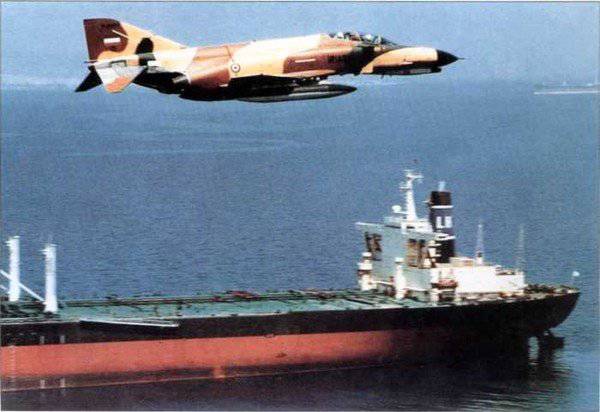
1985 Campaign
At the beginning of 1985, the Iraqi command launched a series of preemptive strikes against Iranian troops. Limited operations were carried out on the southern and central sectors of the front. The stability of the Iranian defense was broken, the Iraqis even managed to press the enemy in some areas. The Iraqi strikes of January-February, the active use of aviation, heavy artillery led to the fact that the combat capability of the Iranian groups was significantly reduced and the Iranian armed forces had to once again postpone the start of a major offensive operation to a later date.
Therefore, the large-scale offensive operation of the Iranian air forces that was being prepared during the year in the southern sector of the front was launched only on March 12 1985 of the year (Operation Badr). The 60 strike force, thousands (the first echelon), was supposed to attack from the area of the Majnun Islands in the western and north-western directions. Iranian troops planned to force the Tigris, cut off and defeat part of the Iraqi troops, to seize part of southern Iraq. The Iranians managed to reach the Tigris in a number of places, and to force the river in one section. The Iraqi forces reacted almost immediately and launched a counterattack. Fierce fighting went on for a week. This battle was one of the bloodiest in the whole war. The Iraqi command foresaw this strike and prepared the necessary reserves in advance. The Iraqi forces with a powerful flank counterstrike cut off the advancing grouping of Iranians, and then, intensively using the Air Force and artillery, defeated it. The Iranian command failed to provide adequate fire support to the advanced units. Of great importance was the fact of the complete domination of Iraqi aviation in the air, especially in the area of the battle. So, if in January, Iraqi combat aircraft made up to 100 combat missions per day, in February, before 200, then in March during the battle - up to 1000. The Iranians lost up to 25-30 thousand people and retreated to their original positions.
Iranian aviation also was not inactive, but it struck mainly at cities and industrial facilities. The Iraqis responded in kind. Therefore, 1985 year entered in history Iran-Iraq war as a year of "war of cities". Iranian and Iraqi air forces bombed residential areas. In March, Iraqi air forces attacked up to 30 of major Iranian cities, including Tehran, Isfahan, Tabriz, and others. In April, Iranian airplanes methodically attacked Basra and Baghdad. Continued and so-called. "Tanker war". In mid-August, the Iraqi command, trying to thwart the export of Iranian oil, deprive Tehran of the sources of currency that was needed to continue the war and force the Iranian leadership to stop fighting at the front, start peace talks, sharply intensified the attack of the enemy’s oil infrastructure. The attacks were carried out on the most important Iranian oil export ports, offshore oil fields and oil transport in the Persian Gulf. Thus, the Iraqi Air Force delivered more than 120 strikes only at the main Iranian oil export port on the Khark Island. From September 1985, the Iranian Navy began to regularly inspect all merchant ships passing through the Strait of Hormuz in order to locate and confiscate military goods.
The Iranian military-political leadership, after the defeat of the March offensive, did not abandon the “war to the bitter end”. Although Tehran has repeatedly made offers to start peace negotiations. It was decided to organize a new offensive in the south. At the same time, in order to exhaust the enemy, deplete his resources and keep the strategic initiative in their hands, Iranian troops from April to December 1985 struck the enemy to 40 of limited value (from battalion to three brigades).
The Iraqi command, making efforts to repel the limited offensive of the enemy, simultaneously improved the line of defense, creating reserves in case of a major offensive by the Iranian armed forces. In general, significant changes in the 1985 year did not happen.
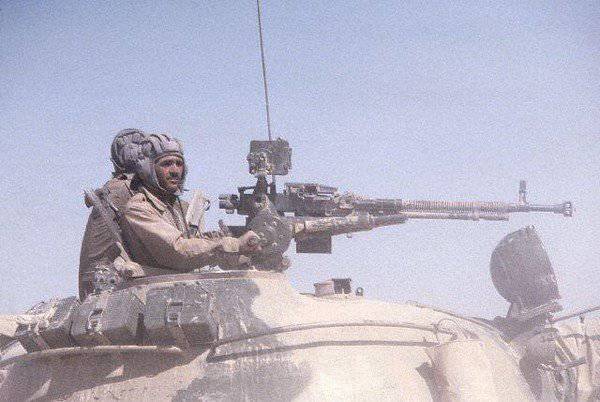
1986 Campaign
The Iranian command was preparing for the most part of the 1985 of the year another decisive operation in the southern sector of the front. By the end of January 1986, preparation for the offensive was generally completed. February 9 1986 five Iranian divisions (altogether more than 100 thousand people belonged to the attacking group) as part of the offensive operation Dawn-8 in several places forced the Shatt al-Arab south-east of Basra. On the morning of February 11, the advancing troops, in cooperation with the airborne assault force, captured the city of Faw on the peninsula of the same name. Then the offensive of Iranian troops developed in the northern (on Basra) and western (on Umm-Qasr) directions.
At the same time, Iranian troops launched an attack from the Khorramshahr area in the direction of Basra. But on this section of the front the Iranian troops did not succeed. Iranian units came under heavy fire from Iraqi artillery and, having suffered heavy losses, were forced to withdraw to their original positions.
12 - February 14, the Iraqi command transferred additional forces to the breakthrough area. Iraqi forces launched a series of counterattacks and were able to stop the enemy’s offensive at the turn of 8 - 10 km north and north-west of the city of Faw. The fierce battles continued almost until the end of the month, but they did not succeed in dislodging the Iranians from the occupied territory. Both sides more than once went on the offensive, but could not gain an advantage. Because of the marshland, the Iraqis could not effectively use heavy weapons, frequent rains and fog interfered with the actions of the Air Force. The Iranians lost up to 50 in a thousand people killed and wounded in this battle. By the end of the month, the Iraqi command ceased attempts to recapture the lost territory. Both sides moved to the defense, consolidating on the new frontiers.
On the night of 24 on 25 February, Iranians launched Operation Dawn-9. Using data from the Kurds, they struck in the direction of Bani-Sulaymaniyah (in the direction of Kirkuk). The Iranians seized a number of enemy strongholds, but soon the Iraqi forces regained their lost positions. In March, both sides went on the defensive.
The Iranian military-political leadership highly appreciated the successes of the February offensive and officially announced that by the end of the year the rout of the Iraqi troops would be completed and a decisive victory would be achieved over Iraq. Iraq launched new mobilization and preparation for the final decisive operation.
Saddam Hussein was enraged by the loss of Fao - the commander of Iraqi forces on the Fao peninsula, Major General Shavkat Ata was recalled to the capital and shot. The troops received orders to repel the peninsula at any cost. The elite units, the motorized brigade of the Presidential Guard, were thrown into battle. Despite some successes, Fao failed to repel. To thwart Iran’s new offensive and smooth the impression of the February defeat, several offensive operations were organized in April and the first half of May. At the same time, the actions of the Iraqi Air Forces were activated, they attacked Iranian cities and industrial facilities. The most famous success of the Iraqi forces was the seizure of the city of Mehran in Iran. In mid-May, 1986, 25, a thousand army corps crossed the Iranian border in the area of the city of Mehran. This area was not of strategic importance, but the 5 thousand garrison was deployed here. The Iraqis pulled up two more divisions, artillery and were able to crush the resistance of the Iranian garrison (400 prisoners were taken). This operation had no strategic significance and did not affect the general course of the war, but was blown up in Iraq to the extent of a great victory, almost a radical change in the war. Soon, Iranian troops cut off communications of the Iraqi garrison in Mehran, and then defeated it. Major General Adin Tawfid, who commanded the operation to capture Mehran, was summoned to Baghdad and shot.
In July, 1986, the Iraqi Air Force launched a series of attacks on Hark Island, which forced Tehran to rely on temporary facilities on the Siri and Larak Islands, which are located further south. But these territories were subjected to raids by Iraqi aviation, which operated from bases in Saudi Arabia.
The Iranian command did not want to put up with the loss of the tactical initiative, so after the liberation of Mehran in September, a strike was struck on the northern sector of the front. Iranian troops at the initial stage of the operation achieved some success, capturing a number of heights in Iraqi territory. The fighting was fierce, a number of points passed from hand to hand several times, the Iraqis widely used aircraft. Then the Iraqi troops, repelling the attacks of the Iranians, launched a counter-offensive and, crossing the border, blocked seven Iranian settlements, including Mehran. The Iraqi command has declared that this is a “demonstrative offensive”, it shows the power of the Iraqi Armed Forces and is not intended to seize Iranian territory. Iraqi troops repelled Iranian counterattacks and, ultimately, withdrew.
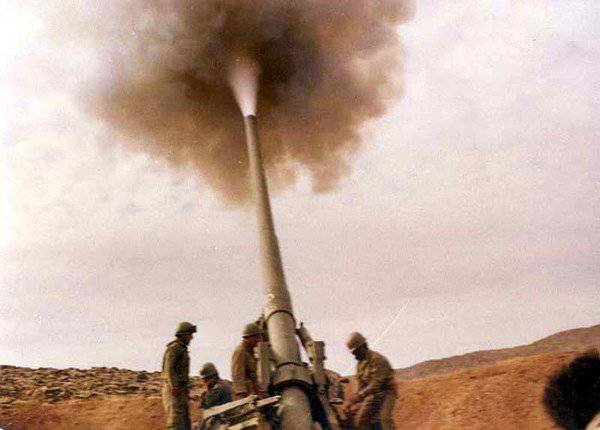
At the end of 1986, the Iranian command launched a new offensive in the southern sector of the front (Operation Kerbala-4). The composition of the advancing forces consisted of six divisions, six separate brigades, special forces formations, as well as various units of the IRGC (only the “revolution guards” were up to 50 thousand people). But Iraqi intelligence was able to reveal the preparation of the Iranian offensive, which made it possible to take the necessary measures. On the night of December 24 1986, the Iranians launched an offensive. 60 Thousands of Iranian soldiers attacked the 40 km front. The Iranians were able to force the Shatt al-Arab, seize a number of islands and bridgeheads on the west coast. The Iraqis went to the counterattack, after an 48-hour-long hard-fought battle, the Iraqi army dropped Iranian soldiers into the water, but lost 10 to thousands of people.
In general, the 1986 campaign of the year was distinguished by a rather high intensity and scale of the battles. The Iranians, despite the heavy losses, were able to achieve significant success. Iranian forces captured Faw, creating the threat of a breakthrough to the most important Iraqi port and Umm Qasr naval base. The possibility of complete cut-off of Iraq from the Persian Gulf and the exit of Iranian troops to Kuwait appeared. This, in turn, could lead to the loss of ties with the monarchies of the Persian Gulf, who assisted Baghdad in the war with Iran. The actions of the Iraqi troops showed that they were still far from defeat and the war could continue for a long time.
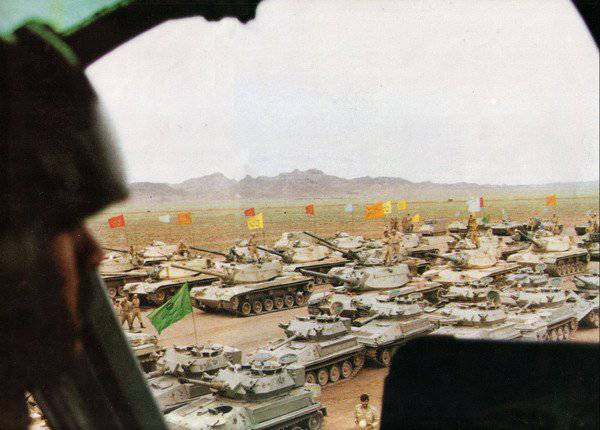
Information